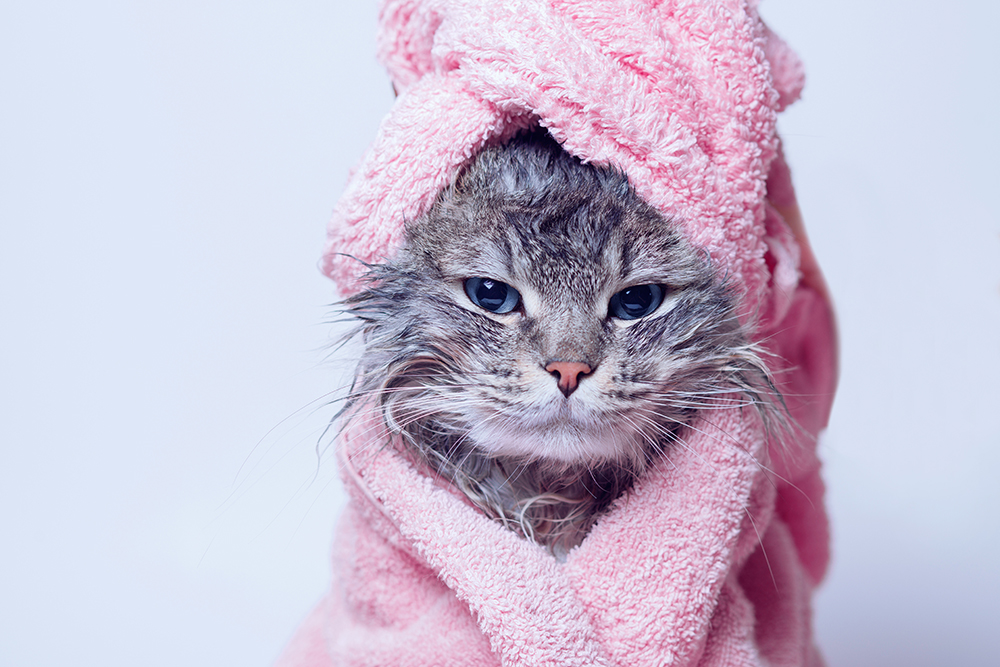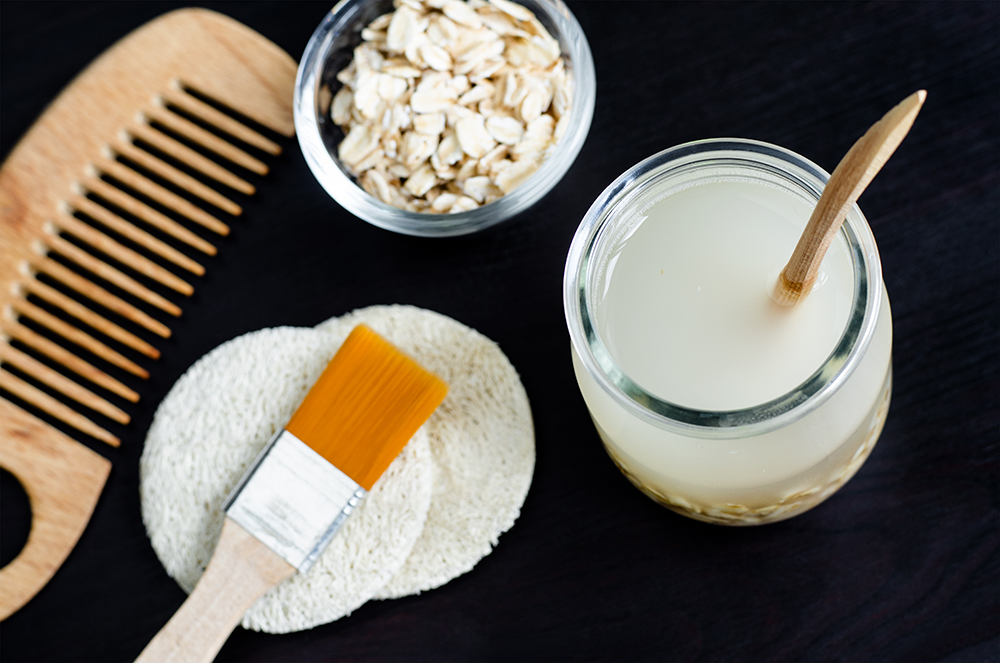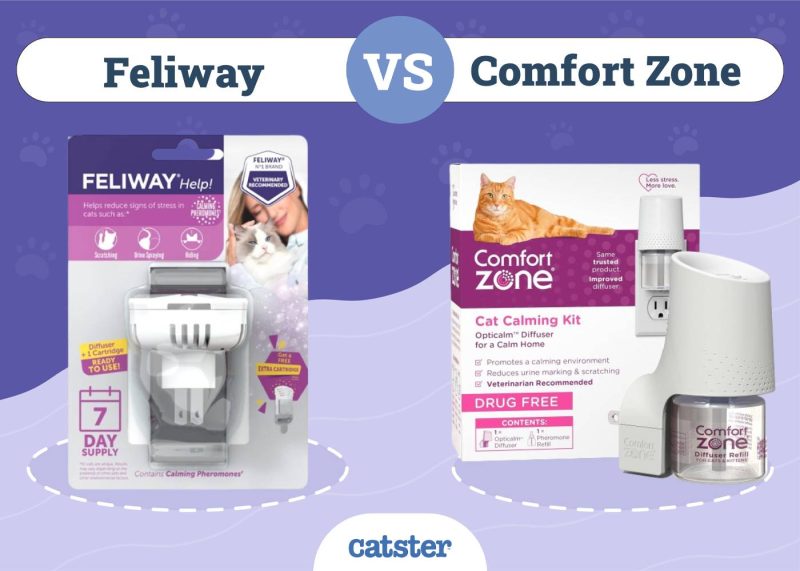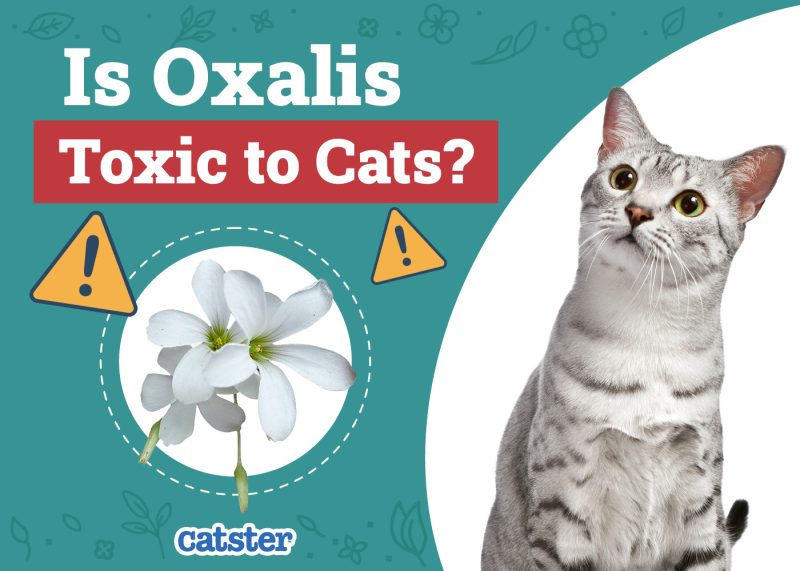In this article
View 2 More +Frequent and persistent scabbing on your cat’s body is not normal. Keep track of where the scabs appear on your cat’s body and schedule a visit to your veterinarian immediately once you notice them.
Treatment of the cause varies widely but is often simple to address. And once you know how to treat the cause you can start working on reducing the discomfort of your feline friend.
In this article, we’ll go into detail on six cheap, effective home remedies to help keep your cat’s scabs clean and irritation-free!

Common Causes of Scabs on Your Cat
The best thing you can do if you see scabs appearing frequently or persistently on your cat is to talk to your vet. Finding out the cause of the cat’s scabs and treating that is the only way to stop them from appearing.
Here is a list of the common causes of frequent scabbing on your cat:
- Scratches or cuts, fights with other animals
- Insect bite or sting
- Ringworm
- Mange
- Allergies
- Feline acne
- Fleas, or flea bite hypersensitivity
- Skin cancer
- Pemphigus
- Eosinophilic granuloma complex
Treating Scabs on Your Cat at Home
Though the long-term treatment will vary based on why your cat has scabs to begin with, there are several things you can do in the short term to help mitigate your feline friend’s discomfort.
A common question that we see online is “Should you pick scabs off cats?” and the answer is a resounding no. The main thing to remember is that scabs are there for a reason. Picking or scrubbing them off will do more harm than good. Scabs keep germs out of wounds and help skin heal.
Treat your cat’s scabs as gently as you would any injury. You want to soothe skin irritation and help soften the scabs so that when they do fall off naturally, they will do so with ease.

The 6 Natural Home Remedies to Treat Scabs on Cats
1. Warm Towel Wrap

Sometimes the best solution is the simplest. A warm towel wrap will reduce any itching your cat may be experiencing and soften the scabs themselves.
And if there’s less itching, your cat is way less likely to scratch themselves raw and open up those healing scabs.
Soak a clean towel in warm water – not lukewarm, but not hot to the touch either. Wring it out so that it is damp, not dripping. Wrap the affected area of your cat in the towel for as long as they will allow and then help them dry off a little.
This method should be avoided if the scabs are caused by a fungal skin infection. Fungus such as ringworm thrive in warm and humid environments.
2. Epsom Salts

Epsom salt baths are a natural and exceptionally inexpensive way to soothe irritated skin — if you can convince your cat to get into a bath, that is!
The warm water will help soften scabs up, the Epsom salts bring down swelling, and you can take the opportunity to clean the area as well.
3. Calendula

Calendula officinalis, also known as pot marigold, is another all-natural remedy. It’s a bit of a wonder plant and has been used medicinally for thousands of years. Calendula has been found to have topical anti-inflammatory and antiseptic properties.
You can spray small amounts of calendula solution to help keep scabs clean and soften them a little. But, if your cat will allow it, you can also dampen a towel and make a wet compress.
Steep approximately 30 g of calendula flowers in a cup of drinking water for 10 minutes, then let it cool down. Once it is warm, but not hot, wet a washcloth and use it to hold some of the brew on your cat’s scabs. The moisture and warmth will be extra helpful for softening up crusty messes. Calendula is considered safe for cats; however, it does contain very small amounts of salicylic acid, so please make sure your cat does not try to lick it off or ingest it. After 15 minutes, rinse very well with water.
The quality of the calendula does make a difference. If you can find it freshly dried and organically grown from a local herb merchant, that’s your best bet. You can also find it at farmer’s markets, or even grow it yourself.
Here is a recipe for a DIY Calendula and Oatmeal Topical Cat Spray:
- Boil the calendula for 10 minutes in the water
- Add the oats to a glass container
- Add the water and calendula into the oats. Let it sit until it cools down.
- Strain pouring the liquid into the bottle and cap with a spray atomizer.
- Spray your cat’s scabs and let it sit for 20-30 min before rinsing well with water.
4. Oatmeal

Oatmeal baths are a super gentle treatment to help reduce any itchiness that may be associated with your poor kitty’s scabbiness. Plus, the warm bath water will help soften the crust and gunk!
You can make your own fancy spa treatment for your feline by finely grinding dry oatmeal and adding it to warm water. Allow your cat to sit in the bath for at least five minutes if they’ll tolerate it.
No need to rinse after because oatmeal is completely safe if your cat licks a bit off later. Just gently dry your cat off as usual.
Oatmeal baths are also an effective treatment for irritation caused by skin allergies, dandruff, and itch-inducing infections.
Grooming your pet at home can help you save money and avoid stress, but only if you're armed with a great pet shampoo. We recommend Hepper's Colloidal Oatmeal Pet Shampoo, which has a pH-balanced, pet-safe formula made with natural ingredients like aloe vera and oatmeal. You won't find any irritants like phthalates, sulfates, dyes, or soaps, and the soothing formula will keep your pet's skin moisturized and happy. Plus, the cucumber and aloe scent will make you feel like you've been to the spa! At Catster, we’ve admired Hepper for many years and decided to take a controlling ownership interest so that we could benefit from the outstanding designs of this cool cat company!
5. Aloe Vera

You may know aloe as the perfect way to soothe a summer burn, but this friendly succulent is useful in a variety of other ways.
The one we’re most interested in here, however, is its ability to alleviate skin pain and irritation. The gooey, gel-like inside of an aloe vera leaf has antioxidant, antimicrobial, anti-inflammatory, and pain-reducing properties.
To extract the gel, simply cut off a piece of an aloe plant and slice it open. You can also buy it, but make sure it’s 100% pure aloe and does not have any added colors or preservatives.
Caution is necessary when using aloe vera for cats. The leaves are mildly toxic if ingested by felines, and we don’t recommend using this remedy on cats that won’t stop licking their scabs. Getting minuscule amounts in their mouth won’t hurt them, but repeated or excessive ingestion should be avoided.
Symptoms of aloe vera poisoning are diarrhea and vomiting. The ASPCA says that the gel is edible and it is the leaves only that are toxic, but better safe than an emergency trip to the vet!
Also, though it is incredibly rare, some humans and animals can have allergic reactions to aloe vera. To make sure this is a safe remedy for your cat, put a test dab on their skin and monitor it for a few hours.
If the skin reacts to the test spot with any signs of irritation (i.e., redness, swelling, hives), forgo further use entirely.
6. Coconut oil

Coconut oil is very nutritious and due to its unique medium-chain fatty acids, antibacterial and antifungal properties, and antiviral potential, it is a very beneficial and valuable component to both humans’ and pets’ diets. Coconut oil also has anti-inflammatory properties and helps support immunity. Besides being well known for its multiple health benefits when ingested, coconut oil works wonders when applied topically.
Its multiple benefits include the ability to hydrate, nourish, and condition skin and hair, and for these reasons, topical coconut oil has great popularity in the beauty product industry. But it doesn’t stop there! Turns out that coconut oil helps fight bacteria and fungi even when applied topically.
After the calendula spray application and rinse, finish up your kitty’s anti-scab spa treatment by applying a thin layer of virgin and organic coconut oil over the scabs. There is no need to rinse it! In addition, you can mix virgin coconut oil with your cat’s food. Start by mixing ⅛ of a teaspoon of virgin and organic coconut oil to your cat’s food plate once a day. If your kitty’s digestion accepts it well, you can slowly work up to ¼ of a teaspoon.
Besides helping to pass hairballs, the nutritional properties of the coconut oil will benefit your cat’s skin from the inside out. Just be warned to use with caution and moderation because coconut oil is very rich in calories, so this needs to be taken into consideration when planning your cat’s diet

Final Thoughts
Your first step in helping your cat with scabs is to find out why they are there in the first place. Once you have a treatment plan from your vet for the cause, then you can go about treating the symptoms too.
With some home-grown plants and convenience store scores, you can help alleviate the itchiness, and crustiness, and keep your cat’s scabs clean in no time.
See also:
- 5 Natural Home Remedies to Treat Cat Ear Mites (With Pictures)
- Can Cats Eat Flaxseeds? Vet-Approved Nutritional Facts & FAQ
- Can Cats Drink Salt Water? Vet-Reviewed Facts & Advice
Featured Image Credit: Yaya Photos, Shutterstock




















